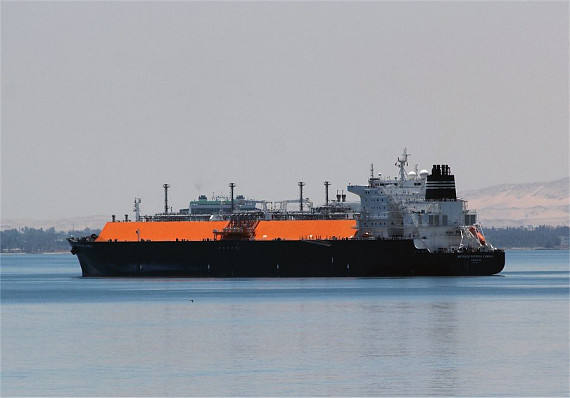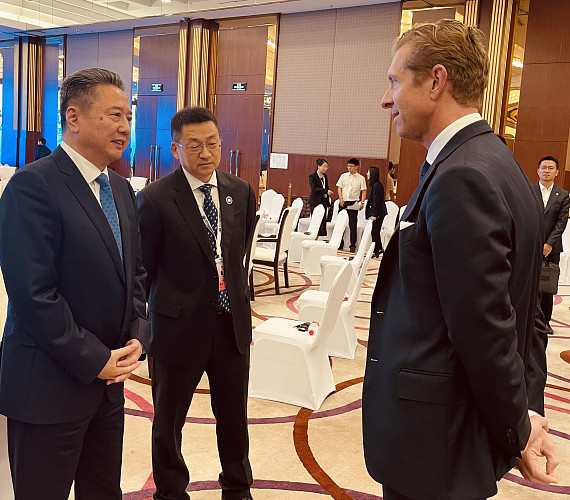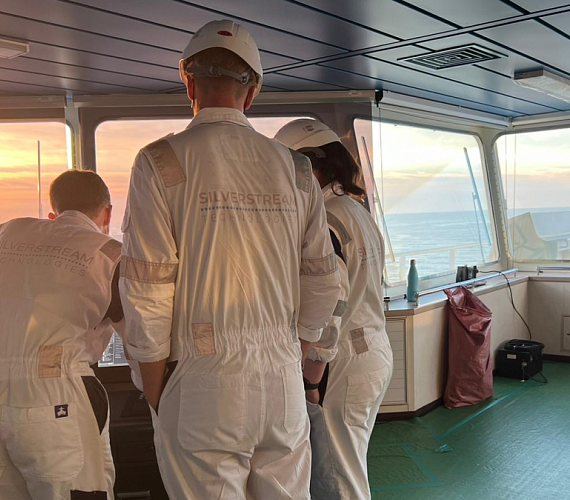对于全体与航运脱碳进程密切相关的人士来说,过去几年是极不平凡的。航运脱碳从一个行业边缘问题上升到了一个主流的商业问题和战略方针,航运业的可持续性发展目前已经成为了一个业界讨论的重点。
围绕航运脱碳所进行的一系列讨论进一步明确了清洁技术的作用,提升了它的形象,确立了其对于行业未来的重要地位。采用Silverstream®系统这类经过验证的清洁技术,因其在商业回报和排放合规方面的显著作用,已从少数先行者的远见之举,演变成为全球航运企业普遍认可并大规模采用的行业解决方案。
船舶碳排放规则:CII和EEXI
随着2022年关将至,行业的焦点聚集在即将于2023年1月正式生效的两项船舶碳排放规则:CII和EEXI。EEXI(Energy Efficiency Existing Ship Index)旨在为营运船舶的技术能效要求框架,而CII(Carbon Intensity Indicator)意在衡量船舶在运送货物或乘客时的营运能效。这两项新规的并行实施,也许正是航运业绿色转型的发令枪。
EEXI是针对船舶设计参数的一次性认证,而CII则偏向营运中的实际排放控制,这两项规则的结合迫使许多船队及运营商选择“速赢”方案,包括限制发动机功率和慢速航线,从而减少碳排放量。
作为一次性认证,EEXI可以说是较容易应对的。该项规则将强制实施短期能效措施,这是一个正在面临能源转型的行业所需要的。
而CII则完全是另一回事。首先,租船协议将对CII的表现和CII的合规性产生巨大影响。虽然遵守规则的责任在船东身上,但实际结果很可能会受到租家对船舶操作的影响。由于CII合规与否很大一部分与实际船舶操作者有关,租船的相关细则,如燃料类型、航速保证和航线都需要提前讨论商定,以确保在每个年度结算期末时不会发生“意外情况”。
因此,CII对于未来的运营战略有着举足轻重的影响。这种持续的压力既是船队们选择类似慢速航行这样追求短期速效方案的诱因,更是此类方案无法长期奏效的根本原因。不同于EEXI,CII并不能解决设计能效的潜在问题,相反,不当的应对措施更可能严重限制船舶运营的灵活性。
新规之下的明智之选
行业迫在眉睫的减碳压力和短期内缺乏可行解决方案的现实之间,类似Silverstream系统这样经过验证的清洁技术显然是行业的最佳选择之一,特别是当船队运营商旨在寻找全生命周期解决方案时。
船队,租家和货主都在努力实现各自雄心勃勃的脱碳目标,更高的船舶能效(而非慢速航行)正成为航运业亟需解决的问题。
经过验证的、不限燃料且可被立即使用在现役船舶的清洁技术能为当下整个行业的减排目标提供切实可行的解决方案。更重要的是,在完成航运脱碳任务的关键时期,它能使船东和运营商始终保持竞争优势,同时满足长期的减排目标。
CII & EEXI: fast approaching deadlines and a requirement to act
For those of us that are closely in tune with the maritime industry’s decarbonisation journey, the last few years have been nothing short of remarkable. From a fringe issue to a mainstream commercial and strategic concern, improving sustainability within shipping is now the industry’s most discussed and debated topic.
This debate has heightened the profile, role and uptake of clean technologies like Silverstream’s air lubrication technology, the Silverstream® System. Proven clean technologies have moved from being the preserve of a few first movers, to a widespread and understood solution for the global fleet, because of their critical role in ensuring commerciality and compliance.
As we near the end of the year, attention now turns to CII and EEXI and their successful implementation starting in January 2023. EEXI is a framework for determining the efficiency of the design of in-service vessels and CII is an operational measure of how efficiently a ship transports goods or passengers. Together, they could represent the start of shipping’s green transition.
While EEXI is a one-time certification targeting design parameters, CII addresses the actual emissions in operation, and the combination of both rules is pushing many operators to pursue ‘quick wins’ including engine power limitations and slow steaming to reduce their carbon impact.
As a one-time certification, EEXI is arguably easier to solve. It will drive more efficient vessel designs in the near term, which is needed anyway by an industry undergoing a hugely transformative energy shift.
CII is a different matter entirely. Firstly, charterparty agreements will hold huge sway in terms of both CII performance and CII compliance. While the burden for compliance will fall on the owner, they may be swayed by charterer requirements for ship operation. As a huge portion of CII performance is related to this actual ship operation, any contractual requirements such as fuel type, speed warranties and route will need to be settled and agreed in advance to ensure there are no surprises at the end of each reporting year.
CII, then, requires constant inclusion in operational strategies going forward. This constant pressure is both what is driving the pursuit of quick wins like slow steaming and is also the fundamental reason why slow steaming will not work in the long term. Not only does it fail to address the underlying aim of design efficiency, unlike EEXI, for example, but it also can significantly constrain operational flexibility.
Caught between the pressure to act immediately and the reality that there is a relative lack of solutions that the sector can adopt in the near term, proven clean technologies like the Silverstream® System are clearly one of the best levers that the industry can pull and install across their fleets, particularly if operators are looking for lifecycle solutions.
And it is vessel efficiency, not slow steaming, that is becoming a commercial imperative as financial institutions, charterers and cargo owners work to meet their own ambitious decarbonisation targets.
Proven, fuel agnostic and readily available clean technologies that can be retrofitted to the existing global fleet are vital to ensuring we reduce emissions today. What’s more, they are enabling owners and operators to retain their competitive advantage, while meeting long term regulatory goals, at this crucial period in shipping’s decarbonisation mission.



